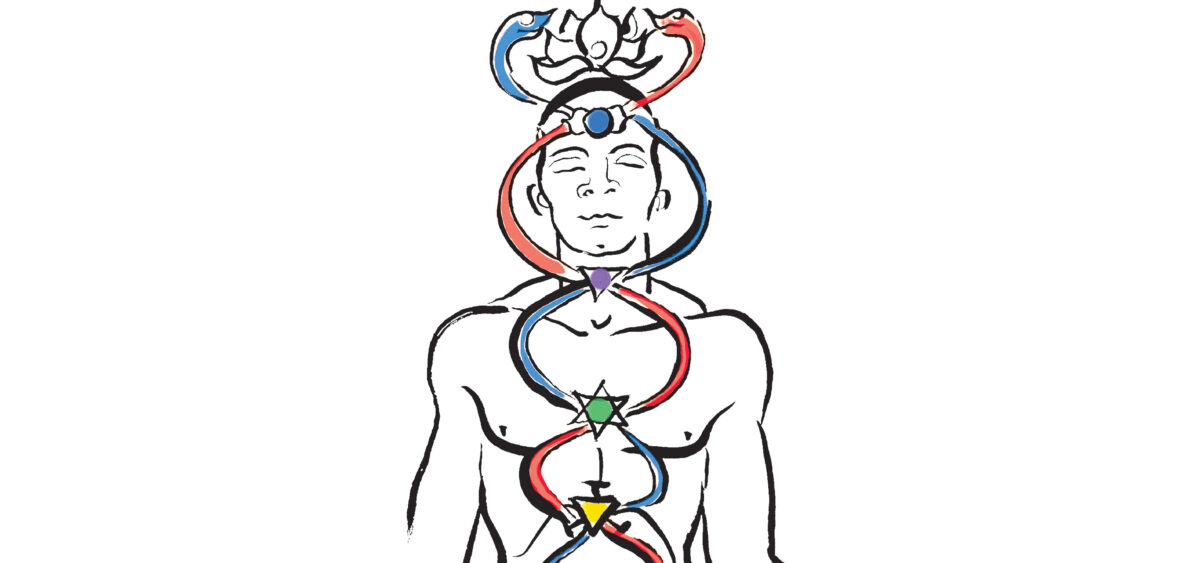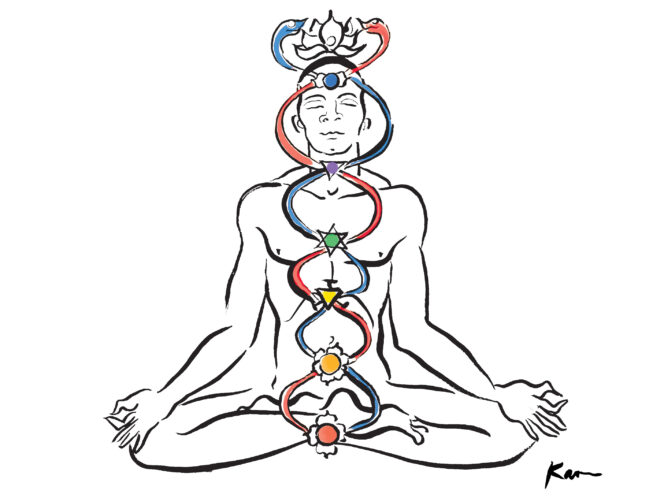
Many yoga traditions recognize the existence of chakras and pay them special attention. This insight is used in meditation, and in working with the body and consciousness.
The term chakra comes from Dharmic religions that originated in the Indian subcontinent, including Hinduism, Buddhism, and Jainism. In Sanskrit, chakra means “wheel,” or “center,” and is based on the premise that humans are more than just a physical body, they also have an energetic, or “subtle” body to which chakras belong. The chakras are mentioned as early as in the Upanishads, the canonical texts dating between the eighth and third centuries BCE, as well as in the Yoga Bhashya, the oldest commentary on the Patanjali Yoga Sutras, written around the second century CE.
Most traditions recognize the existence of seven main chakras, along with many smaller ones (ranging from a few to even eighty-eight thousand). The main chakras are located along the sus








